Apple Vision Pro: A Developer's Journey With Spacial Computing
When I first slid on the Apple Vision Pro, I was bracing myself for another overhyped gadget. Instead, what I encountered was a transformative leap into the future of digital interaction. This wasn’t merely a high-tech toy; it was a tool that seamlessly wove itself into my daily coding rituals, shattering my preconceived limits of what technology could achieve. From that moment, I was hooked—immersed in a mixed reality that felt both groundbreaking and surprisingly intuitive.
More Than Just Another Gadget
When the Apple Vision Pro arrived, the anticipation was palpable. Unpacking it, I was struck by its sleek, minimalist design—very much what you’d expect from Apple. And let’s be clear, I’m not an Apple “fanboy”, but I can definitely appreciate top-tier craftsmanship when I see it.
The heft of the Vision Pro was my first clue to the serious technology within. This wasn’t just another headset; it was like holding a new gateway to uncharted digital territories. The first time I powered it on, my ordinary living room transformed into a vivid showcase of digital possibilities.
Setting it up turned out to be surprisingly simple. Apple’s knack for intuitive design really shone through, making the initial setup feel almost effortlessly smooth. The demos were particularly striking—the dinosaur experience was so mesmerizing, I found myself instinctively wanting to reach out and touch the creatures.
The pass-through feature, while slightly grainier than I’d hoped, still impressed me by seamlessly merging the digital and physical worlds. It was easy to forget I was seeing everything through cameras. The eye-tracking navigation felt natural from the start, a testament to the sophisticated sensors and innovation Apple managed to pack into such a slim device.
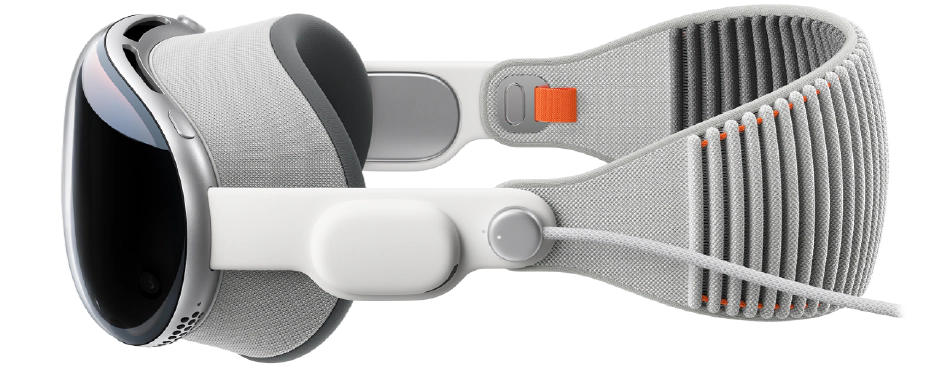
At $3,500, the Vision Pro isn’t a casual purchase—it’s a significant investment. But what you get for the money isn’t just about fun or novelty; it’s about fundamentally changing the way we interact with technology in our daily lives. This device doesn’t introduce brand-new features to the world of headsets, as many of its capabilities, like immersive AR experiences, can be found in other products. However, Apple has refined these features to a level of intuitive integration that feels almost seamless within its ecosystem.
For instance, the eye-tracking navigation is impressively intuitive, although it might require occasional recalibration. It’s these little details that demonstrate how well Apple has managed to meld hardware with software, making the Vision Pro more than just a gadget. It’s an exploration into how mixed reality can enhance how we work, play, and interact with digital content—ushering us into a future we’ve only just started to imagine.
Despite its steep price, the Vision Pro is more than an expensive toy; it’s an invitation to explore and redefine our digital horizons with technology that just gets it right.
The Developer’s Odyssey & Navigating the Quirks of VisionOS
Venturing into development for the Apple Vision Pro took me from the familiar terrain of web development to the new and thrilling landscape of augmented reality. My project: bringing the SpaceX Crew Dragon’s cockpit to life in a fully immersive digital format. This wasn’t just a continuation of my previous work with the Dragon UI screens, which you can see right here . Instead, it was a bold step into the expansive and somewhat mysterious world of AR development—a field I had long admired but hadn’t explored hands-on.
Equipped with Apple’s toolkit—Swift, SwiftUI, and ARKit—I tackled this new challenge head-on. My transition to coding for augmented reality marked a significant shift from my JavaScript roots, pushing me to adapt and grow. I’ve often said that I’m “syntax agnostic,” a view I’ve shared before in my post on programming languages , believing that the essence of coding lies in problem-solving, not in the specific language used. This mindset helped me switch from JavaScript to Swift, navigating through similarities and encountering unique hurdles along the way.
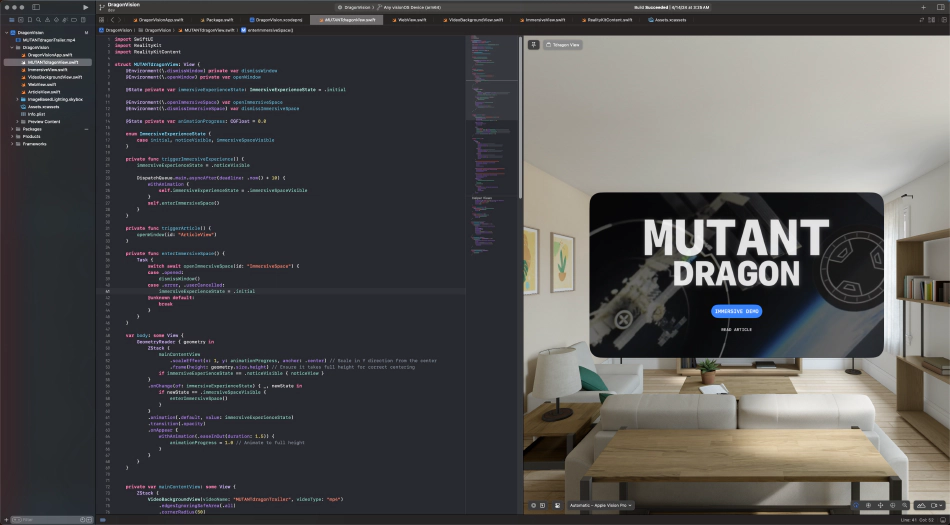
The dive into Swift and SwiftUI, paired with ARKit’s powerful features, made my first AR project less daunting than expected. The Apple development environment’s intuitive nature, combined with a supportive community on forums, helped flatten the learning curve. Within days, I was turning a daring concept into a tangible, interactive reality with my Dragon app, crafting an immersive experience that replicated the cockpit with high fidelity based on available videos and screenshots.
This project was more than just learning new syntax or grappling with the nuances of AR development; it was about creating a new digital reality from scratch. The Dragon cockpit simulator evolved into a passion project, demonstrating the potential of immersive technology to both replicate and innovate.
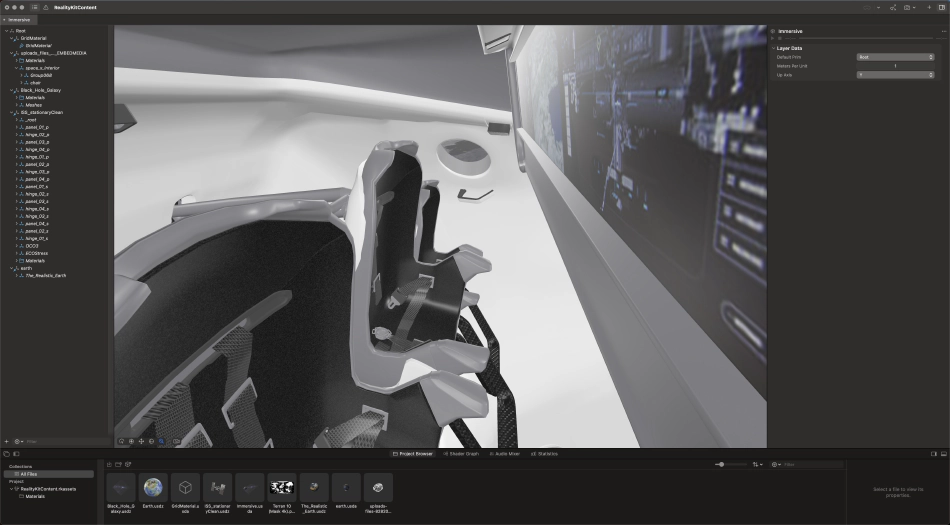
However, this journey wasn’t without its challenges. VisionOS sometimes threw curveballs, like its approach to screen zoom settings, which required inventive coding solutions to ensure a consistent experience across different user settings. These challenges were crucial learning opportunities, teaching me to be flexible and resilient while dealing with the teething problems of a first-generation operating system.
This odyssey with the Vision Pro underscored the boundless possibilities of mixed reality. It stretched my skills as a developer, broadened my toolkit, and forced me to think in entirely new dimensions. Every success and every obstacle was not just a step in the project but a leap toward a future that’s still taking shape—a future we’re crafting one line of code at a time.
A Fusion of Productivity and Immersion
Using the Vision Pro daily was a revelation. My ordinary work setup evolved into a dynamic command center. Projects didn’t just exist on a screen—they enveloped me. The Vision Pro’s ability to blend digital elements into my physical space turned every task into an interactive escapade. Ideas no longer stayed trapped in paper or pixels; they hovered around me, breaking free from the boundaries of traditional screens.
Beyond work, the Vision Pro rejuvenated my downtime, too. Watching shows on AppleTV+ became an enveloping experience that made traditional TV look downright quaint by comparison. Gaming shifted from being just a casual pastime to an engaging journey, each game offering its own set of challenges and discoveries.
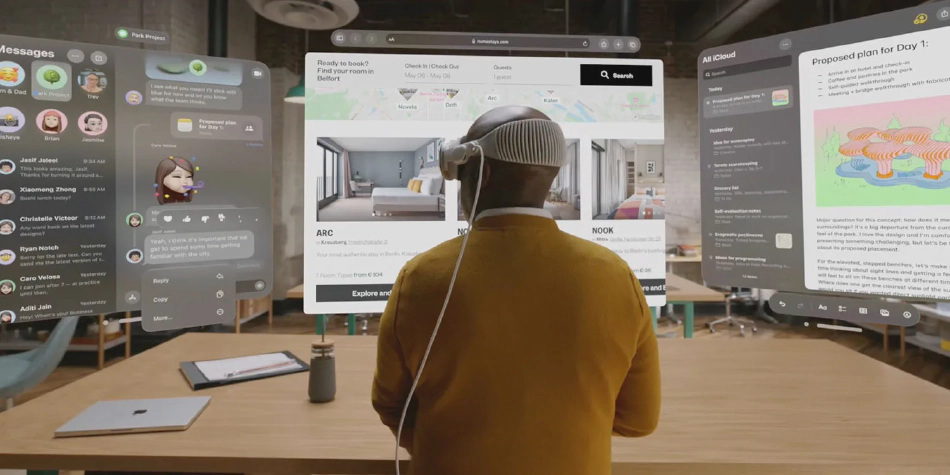
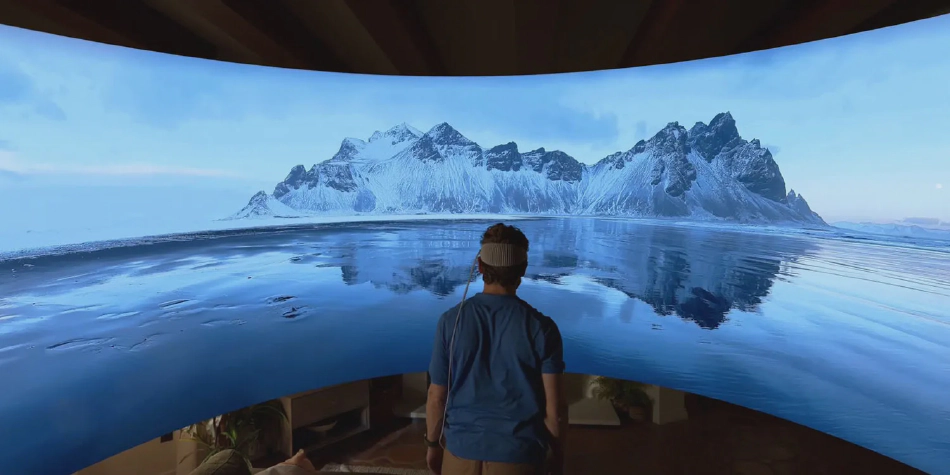
Of course, the Vision Pro isn’t without its drawbacks. The heft of the device and the need for an external battery pack are palpable reminders of its physical presence. Yet, these issues became negligible once I adapted to the new dynamics of my digital interactions. After a week, the weight didn’t bother me at all.
In merging work and leisure, the Vision Pro has proven to be much more than just another tech gadget—it’s opened doors to countless possibilities. It has transformed not just my professional and personal life but also the way I perceive reality. With the Vision Pro, the future isn’t just something to ponder—it’s an immersive, interactive experience I can dive into time and time again. This device doesn’t merely change how we interact with digital content; it reshapes our capacity to connect with and immerse ourselves in our environments, serving as a springboard for broader discussions about our digital existence and collective future.
A Journey Through Potential and Pitfalls
VisionOS, the brain behind the Apple Vision Pro, is a daring leap forward. It brings to mind the early days of the iPhone—missing some key features, yet clearly on the brink of revolutionizing tech. VisionOS is laying the groundwork for a future where the digital and physical worlds blend seamlessly. But let’s be real; it’s still a bit wobbly, brimming with potential while stumbling over a few early obstacles.
Stepping into the VisionOS landscape feels like setting sail in uncharted waters. The potential for new ways of digital interaction is exciting, but the first few voyages haven’t been all smooth sailing. Some apps look great from afar but don’t hold up to scrutiny, missing the depth we expect. And yes, there are those annoying glitches that pop up and remind you that you’re basically a beta tester exploring the frontiers of this new tech.
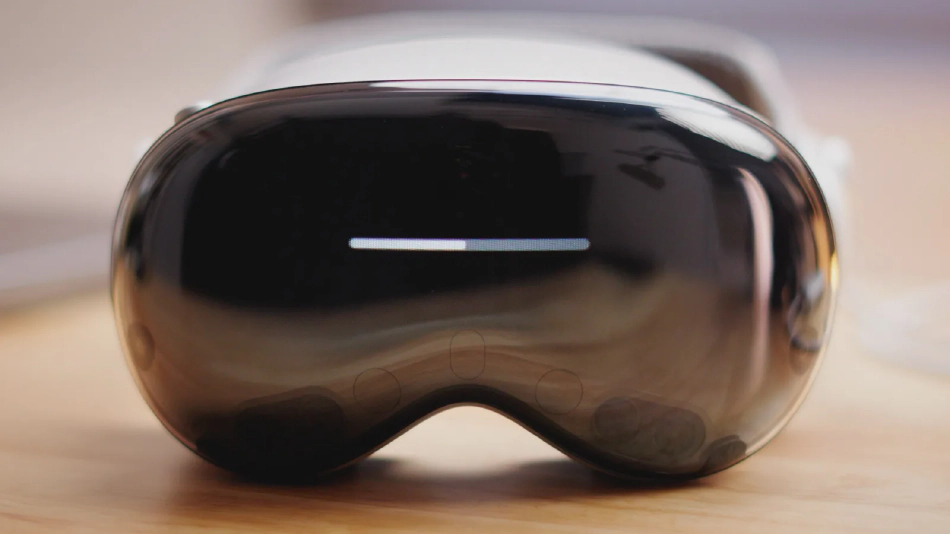
Yet, if we only focus on these early bugs, we’re missing the big picture. VisionOS isn’t just another new software; it’s laying the foundations for a whole new digital era. It’s basically a blank slate waiting for creative minds to draw the paths that will lead us from merely looking into new worlds to actually stepping into them. Every update and tweak is a step closer to realizing the Vision Pro’s true potential, much like how the early iPhones evolved or how Tesla keeps refining its cars.
VisionOS is more than what it is right now; it’s about what it will be. It invites us to dream big, explore boldly, and build new realities where the only limits are those we set ourselves. As VisionOS develops, it promises not just better entertainment and productivity but a complete transformation of how we experience life, blurring the line between digital and physical.
Navigating VisionOS isn’t just about watching from the sidelines; we’re in the thick of it, actively shaping a future where our digital and physical lives meld into one. It’s full of challenges, sure, but also packed with opportunities. As VisionOS grows and the Vision Pro moves from a pioneering piece of tech to a gateway into new realities, we’re right on the edge of a world where technology doesn’t just change our lives—it enriches them in ways we’ve only started to imagine.
The Vision Pro Odyssey
We’re on the edge of something big with the Apple Vision Pro in hand—not just improving our tech arsenal, but merging our digital and physical worlds in ways we’ve only dreamed of. This device blurs the lines between what’s real and what’s digital, reshaping our reality into something richer.
The Vision Pro is no ordinary gadget; it’s a creative powerhouse that taps into our collective imagination. It beckons to pioneers in every field—developers, storytellers, educators, dreamers—challenging us to craft stories untold and explore uncharted territories. With the Vision Pro, we’re not just using a tool; we’re transforming how we live.
We’ve all seen high-tech headsets like the Meta Quest 3 or the XReal Air, and I’ve shared thoughts on those before. But the Vision Pro stands out. It doesn’t just match other devices in function; it enhances them, making daily interactions more meaningful and reshaping our perceptions of the environment around us. This isn’t just about integrating technology into our lives; it’s about making it a core part of our existence.
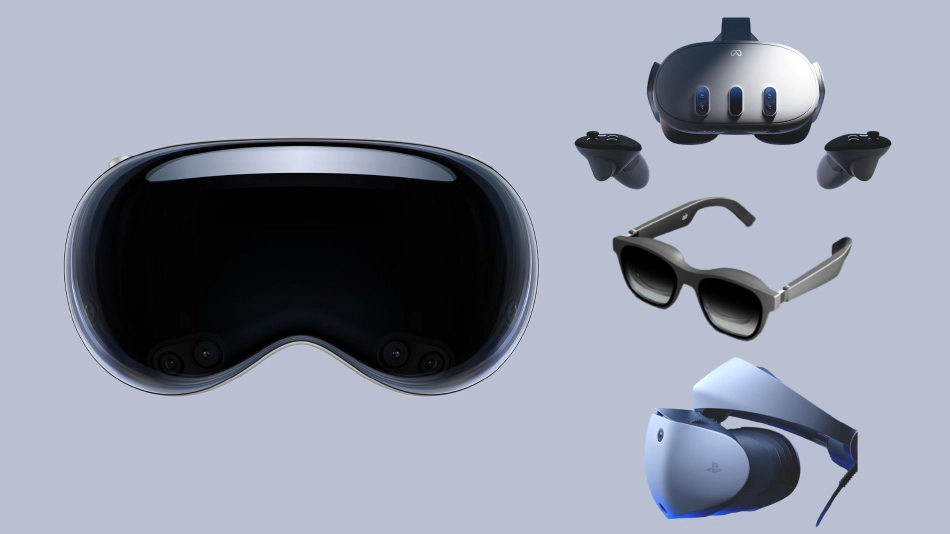
However, this journey of innovation isn’t all smooth sailing. The path the Vision Pro charts is as challenging as it is fascinating. This device is a declaration of potential and an invitation to those bold enough to imagine what’s beyond the conventional limits.
As we step into the unknown realms of mixed reality, one thing becomes clear: we’re starting a new chapter. The Vision Pro isn’t the conclusion; it’s the beginning of an adventure that aims to redraw the boundaries of our reality, encouraging us to rethink, reshape, and ultimately unify our digital and physical worlds.
This is more than innovation; it’s the start of a new era in how we connect and create. As we navigate this emerging landscape, the possibilities whisper to us, a blank slate urging us to dream, craft, and explore. The Vision Pro isn’t just a peek into the future; it heralds a vast array of possibilities waiting to be realized.
Remember, as groundbreaking as the Vision Pro is today, it’s just the first chapter. Apple will likely continue to refine and evolve future models to be lighter, more affordable, and even more seamlessly integrated into our lives. We’re just at the beginning of a story that will unfold in ways we can only begin to imagine—a story filled with potential, showcasing the magic of what can happen when technology meets human creativity.
So here’s to the Vision Pro—a signal of what’s yet to come, a challenge to the ordinary, and an invitation to join an exploration like no other. The future is vast, unexplored, and full of excitement. With the Vision Pro guiding us, there’s no telling what we might discover. Indeed, the best is yet to come.
PRODUCT REVIEW
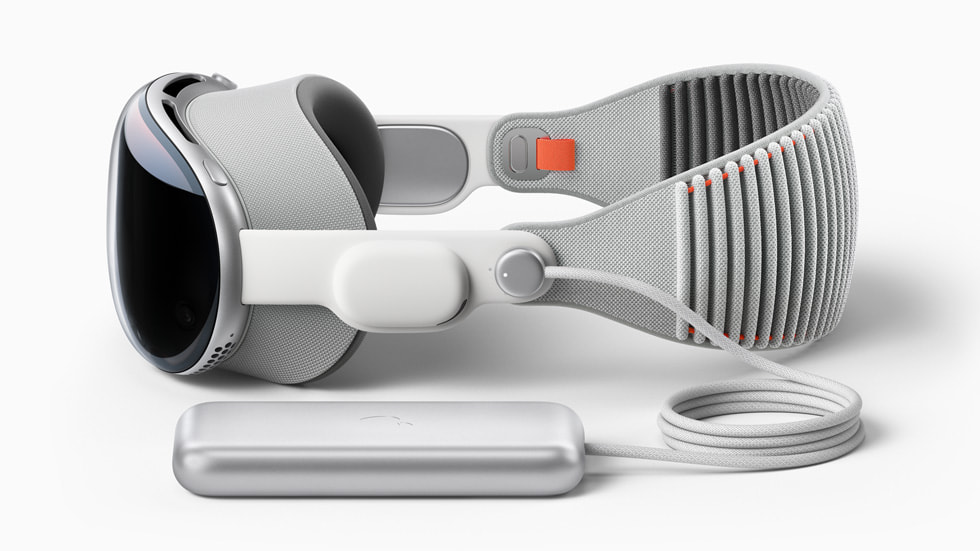
Apple Vision Pro
The Apple Vision Pro isn’t just stepping onto the mixed reality scene—it’s aiming to completely reshape it. Its pass-through capability, though not exclusive to this model, certainly raises the bar, merging the digital and physical worlds with an ease and flair that feels almost magical. Alongside features like precise eye-tracking and immersive demos, the Vision Pro showcases Apple’s dedication to expanding the boundaries of what mixed reality can offer. The design and functionality reflect Apple’s sharp attention to detail and commitment to innovation, setting it apart from others in the field. Yes, the $3,500 price tag is a hefty one, but the value it adds to both work and play might just justify the expense for tech enthusiasts looking to be at the forefront of digital interaction. I’d suggest trying out a demo at an Apple Store to really grasp what this device can do. Ready to take a leap into the future of mixed reality? The Vision Pro is here to take your world to new dimensions. Dive in and see for yourself why it's more than just hype—it's a peek into the future of how we interact with tech. Get ready to and embark on an adventure in seamless reality that’s too good to miss.
FAQs
Answers to the most frequently asked questions.
Considering its high cost, is the Vision Pro worth the investment?
The Vision Pro’s $3,500 price tag is indeed steep, but its value comes from its ability to dramatically alter how we interact with digital content in professional settings, gaming, and media consumption. It's a substantial investment in the future of mixed reality, offering a glimpse into the advanced capabilities and experiences that define the next generation of technology.
How effective is the eye-tracking feature in enhancing the user experience on the Vision Pro?
The eye-tracking feature of the Vision Pro significantly enhances the user experience by allowing intuitive interaction with digital content. This capability enables users to navigate and control the mixed reality environment more naturally and fluidly, greatly benefiting both productivity and entertainment.
What makes the Vision Pro different from other AR devices on the market?
The Vision Pro distinguishes itself with advanced features like precise eye-tracking navigation and a high-quality immersive pass-through experience. These capabilities, along with engaging demos like the detailed dinosaur experience, set it apart from other mixed reality headsets by deeply integrating digital content into the physical space.
How does the Mac Virtual Display enhance productivity when using the Vision Pro?
The Mac Virtual Display on the Vision Pro effectively extends your Mac desktop into a mixed reality environment, allowing for enhanced multitasking and increased productivity. This feature provides a spacious virtual canvas that integrates seamlessly with your physical workspace, transforming how you manage applications and workflows.
Could the Vision Pro ever replace PCs or laptops?
Currently, the Vision Pro isn't ready to replace traditional computing devices like PCs or laptops, mainly because of its form factor and the nascent stage of its software. However, it does offer a fascinating look at how future interactions with our digital environments might evolve, hinting at what's possible down the road.
How has using the Vision Pro changed your perspective on the possibilities of mixed reality?
The Vision Pro has deepened my appreciation for how mixed reality can revolutionize our interaction with technology. It's not just about gaming or entertainment; it's about transforming everyday tasks and professional workflows, though the technology will undoubtedly continue to evolve and improve.
What tools does Apple provide for developers interested in creating apps for the Vision Pro?
Apple offers a robust set of development tools for the Vision Pro, including Swift, SwiftUI, and ARKit. These are complemented by comprehensive documentation and support through an active developer forum, making it easier for developers to dive into augmented reality projects.
Share This Post
When Apple launched the Vision Pro, it promised a revolution in spatial computing. But for those of us who love to consume and create media, the limited internal storage quickly became a glaring issue. Enter the WD My Passport Wireless Pro, an unassuming device that has transformed my Vision Pro experience. It’s more than just an external drive; it’s a portable media server, a productivity hub, and a travel essential – all in one sleek package.
When I first slid on the Apple Vision Pro, I was bracing myself for another overhyped gadget. Instead, what I encountered was a transformative leap into the future of digital interaction. This wasn’t merely a high-tech toy; it was a tool that seamlessly wove itself into my daily coding rituals, shattering my preconceived limits of what technology could achieve. From that moment, I was hooked—immersed in a mixed reality that felt both groundbreaking and surprisingly intuitive.
Ever had one of those days where nothing seems to go right? You’re trying to make your website perfect, but instead, it’s like the universe is playing a cruel joke on you. That was me recently, tangled in a web (pun intended) of frustrations while trying to set up a custom 404 error page for my website. Hosted with Docker and NGINX, my site stubbornly displayed the default NGINX ‘Page Not Found’ message instead of my sleek, custom 404 page. After countless failed attempts to fix it, I decided to call in reinforcements—Cloudflare Workers. If you’re nodding your head in sympathy, keep reading. This post is for you.
Amidst the ever-evolving landscape of web development, where complexity often overshadows the essential goals of efficiency, security, and scalability, static site generators (SSGs) emerge as pillars of simplicity. These powerful tools are not only rejuvenating our approach to website creation but are also guiding us toward more sustainable, manageable, and high-performance web solutions. Embark on a comprehensive exploration of SSGs, uncovering their revival, robust security features, and ingenious ways they accommodate dynamic content capabilities.
In the ever-evolving digital landscape, the unveiling of invisible technologies like pixel tracking has sparked conversations about privacy, ethics, and the invisible threads connecting our online interactions. Each click, every opened email, and every page browsed, weaves into a rich mosaic of data exchange. As we embark on this exploration, the creation of NanoTrack emerges as a pivotal moment in rethinking how we navigate the complex web of digital analytics.
jimmypopjr
Dillon Baird - DillonBaird.io
jimmypopjr